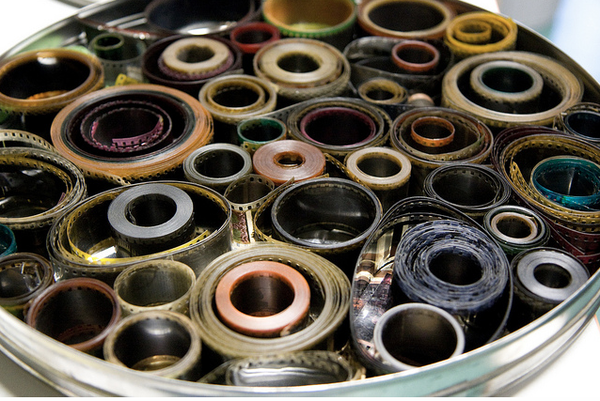 For years now, filmmakers and critics have been predicting the "death" of celluloid film due to the constantly improving quality of high-definition video. The rise of quality in digital cameras and projectors have been changing the way audiences look at movies on the big screen with very few audiences noticing the difference. On an economic level, shooting digitally would save production and distribution companies thousands, even millions of dollars in the long run, saving on costs for negative development, digital transfers, and printing positives for film reels to be screened at movie theatres.
For years now, filmmakers and critics have been predicting the "death" of celluloid film due to the constantly improving quality of high-definition video. The rise of quality in digital cameras and projectors have been changing the way audiences look at movies on the big screen with very few audiences noticing the difference. On an economic level, shooting digitally would save production and distribution companies thousands, even millions of dollars in the long run, saving on costs for negative development, digital transfers, and printing positives for film reels to be screened at movie theatres.
John Fithian, President of the National Association of Theaters stated in his annual state of the industry address: "For any exhibitor who can hear my voice who hasn't begun your digital transition, I urge you to get moving... Simply put, if you don't make the decision to get on the digital train soon, you will be making the decision to get out of the business" (Dombrowski 235). Truer words could not have been predicted, as on January 19, 2012, Eastman Kodak, the most innovative retailer in both still photography film and motion-picture film over the last century declared bankruptcy (Savitz).
So what's the big deal? Is it just a matter of purists holding on to an obsolete medium, or is there something authentic and "pure" behind shooting on motion-picture film? Furthermore, as digital cinema rises, what are the implications of the death of celluloid film and takeover of HD video? With this backgrounder, I hope to give an objective perspective on both sides of the argument.
 Due to the relatively low price of digital video (in comparison to motion-picture film), it democratizes the filmmaking process, opening up new schools of filmmaking based on cutting-edge, alternative methods. Ganz and Khatib also argue that the digital cinema revolution also offers a mode of re-defining what cinema actually is: the space of who can see what is being shot is now open to all eyes on the film set, and shooting a movie is no longer a privilege for the cameraman (21). Despite these arguments, I will use this white paper to argue against the digital cinema revolution and for the pragmatic, realism of celluloid motion-picture film.
Due to the relatively low price of digital video (in comparison to motion-picture film), it democratizes the filmmaking process, opening up new schools of filmmaking based on cutting-edge, alternative methods. Ganz and Khatib also argue that the digital cinema revolution also offers a mode of re-defining what cinema actually is: the space of who can see what is being shot is now open to all eyes on the film set, and shooting a movie is no longer a privilege for the cameraman (21). Despite these arguments, I will use this white paper to argue against the digital cinema revolution and for the pragmatic, realism of celluloid motion-picture film.
Recent Comments